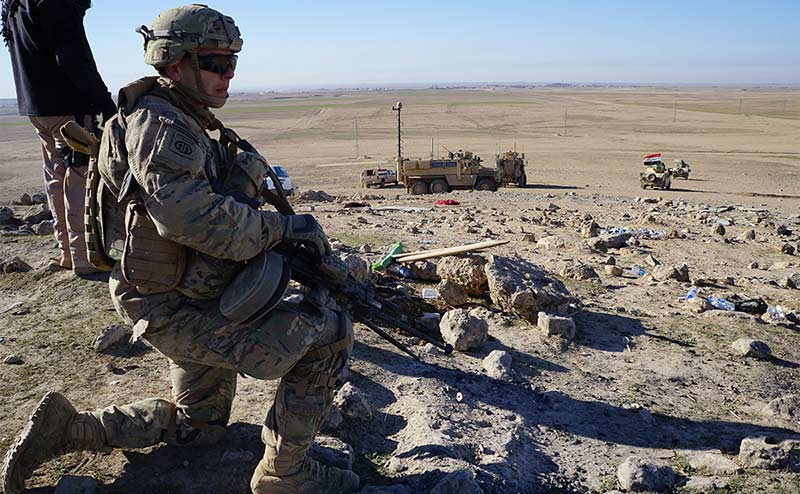Factors to Assess: Situation
Situational factors within an organization can enable or trigger counterproductive leadership behaviors. Review the interaction below to learn how the Army culture and unit climate may influence the emergence of these behaviors.
Army Culture

Culture refers to the environment of the Army as an institution and of major elements or communities within it. The Army culture celebrates mission accomplishment and a strong work ethic. It celebrates those who fit the “model military leader” image of being charismatic, self-assured, physically fit, and decisive. It has a strong hierarchy and encourages loyalty. These cultural norms help the organization operate effectively and achieve positive outcomes by guiding individual behavior. However, over time, they can become distorted. If taken to extreme, they can also contribute to the demonstration of less effective behaviors and climates within the unit.
Achievement of Results Quickly and at Any Cost
Given the nature of the Army’s mission, leaders often encounter intense pressure to perform, meet expectations of their position quickly, and impact significant change. For some leaders, this may translate into a “get results at any costs” mentality where counterproductive leadership behaviors are a permissible and necessary means to the end objective, despite the harm they inflict on individuals and how they erode unit cohesion.
Fulfillment of Hard-Charging Leader Stereotype
Appearance as a strong leader who Soldiers willingly follow is highly valued in the military culture. Presence is one of the desired attributes of leaders outlined in Army leadership doctrine (ADRP 6-22). Strength is conveyed by physical stature, resilience, expertise, decisiveness, and a whole host of behaviors that relate to the effectiveness of one’s influence. However, some leaders may try to convey strength in a counterproductive manner (e.g., using oppressive or abusive techniques), based on how they’ve seen Army leaders portrayed in the media or historically, which has an opposite effect to what is actually desired.
For the Army to achieve its greatest potential, individual leaders need to be able to use a range of leadership influence techniques appropriate to their role and circumstances. Although engaging in counterproductive leadership behaviors may enable some leaders to succeed and achieve results in the short-term, counterproductive leadership has negative consequences that are difficult to avoid and recover from.
Extreme Deference to Authority
The Army operates with assigned and implied authority. Followers at all levels, who are leaders themselves, are expected to comply with that authority. Some leaders rely almost exclusively on their rank or positional authority and expect unquestioning compliance. Disagreement or even questioning of a superior can be a sign of disrespect in the Army; however, decision makers sometimes don’t have full situational or technical awareness. Some decision makers play up their authority by not allowing subordinates to provide clarifying information or advice. Physical and mental hardships are seen as “badges of courage,” and speaking up against abusive words or actions is sometimes seen as “whining” or a lack of “toughness.”
In a culture where ideas counter to the boss can be seen as threatening, counterproductive leadership is more prone to occur and less easily mitigated when it does.
Unit Climate

While strategic leaders shape the Army’s culture, organizational and direct leaders shape the climate of units and organizations. As stated in ADRP 6-22, “climate is how members feel about the organization and comes from shared perceptions and attitudes about the unit’s daily functioning. Climate affects motivation and the trust Soldiers and Army Civilians feel for their team and leaders.” When the Army’s cultural norms around mission accomplishment, leader presence, and hierarchy and loyalty are taken to the extreme, the effects can trickle down into unit climate. For instance, “hard charging” leaders can result in excessive demands at the unit level. What elements of your unit’s climate may impact whether counterproductive leadership emerges? Select each factor to learn more.
Unclear Roles, Expectations, and Goals
The modern Army professional is expected to operate in volatile, uncertain, complex, and ambiguous environments. Leaders who aren’t fully prepared to meet these ambiguous demands and/or who don’t clarify roles, expectations, and goals for their subordinates, to the extent possible, may prompt subordinate leaders to resort to counterproductive leadership to deflect any perceived shortcomings away from themselves to others.
Excessive Demands
In the Army, leaders may be confronted with excessive demands; this may take the form of extreme demands on their time or extreme urgency to complete competing tasks. They may also be asked to “do more with less” to the point that they actually have insufficient and/or substandard resources to do their work (e.g., equipment, fuel, ammo, access to training ranges/facilities, undermanned).
If leaders aren’t confident in their abilities or aren’t meeting their expectations, they’re likely to feel stressed and that the situation is out of their control. Some leaders may manage these tasks and feelings by using more directive methods to try to achieve results (e.g., threats, intimidation). Additionally, they may blame others for their inability to achieve results.